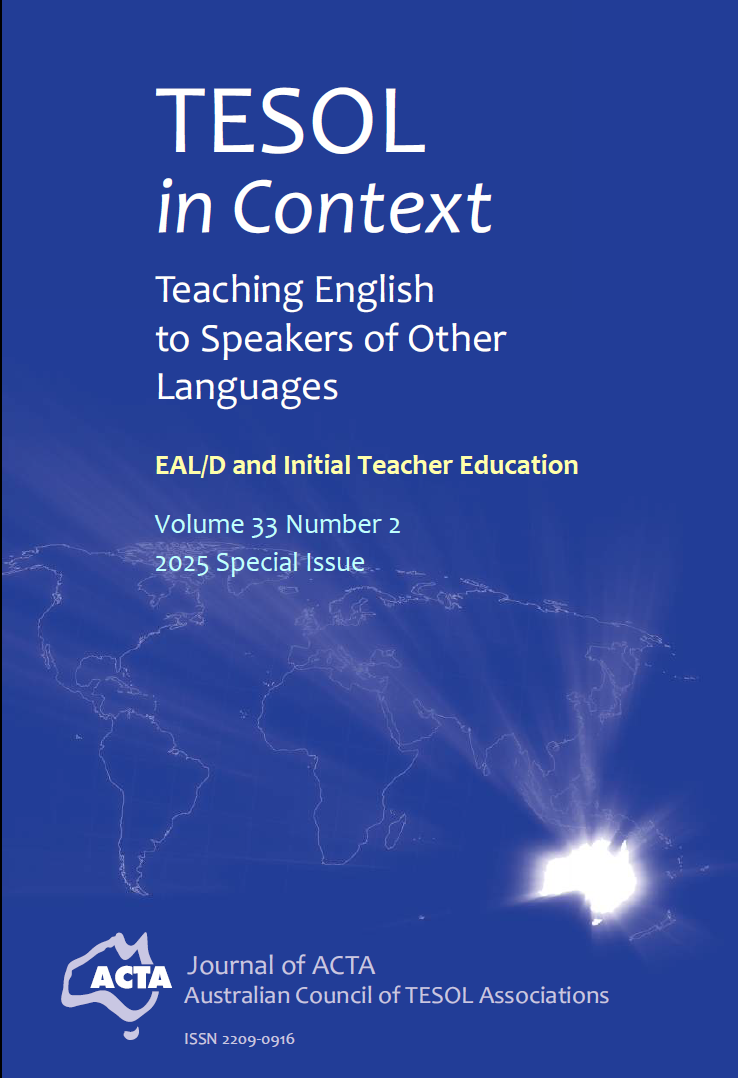Initial Teacher Education and the Emotional Geography of Languages: A conceptual intervention
DOI:
https://doi.org/10.21153/tesol2025vol33no2art2096Keywords:
Teacher education, emotional geography of languages, multilingualism, critical multilingual language awareness, diversityAbstract
The article addresses a key challenge faced by Initial Teacher Education (ITE) programs: how to reconcile the growing multilingual reality of society with the limited adoption of multilingualism in educational practice. It begins by providing an overview of ITE and some of its challenges. It then examines the importance of Critical Multilingual Language Awareness (CMLA), which emphasizes multilingualism as essential for equity and inclusion in linguistically diverse contexts. To extend the discussion of CMLA, the idea of Emotional Geography of Languages (EGL) is introduced as a conceptual framework grounded in the affective turn in Applied Linguistics and TESOL, the spatial turn in education, and Indigenous views of land-people relationality. EGL explores how emotions and identities, tied to places and languages, shape human relationships while challenging policies that marginalize mother tongues and heritage languages. The article concludes by demonstrating how EGL can inform teacher candidates’ CMLA, preparing them to contribute to pedagogical and social transformation in linguistically diverse settings.
Metrics
Downloads
Published
Issue
Section
License
Copyright (c) 2025 TESOL in Context

This work is licensed under a Creative Commons Attribution-ShareAlike 4.0 International License.






